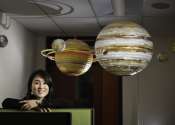New pics of Phobos from China's Tianwen-1 orbiter
Two fundamental factors affect all astrophotography—timing and location. If a camera happens to be at the right place at the right time, it can capture images that have never been seen before. And with the proliferation ...









